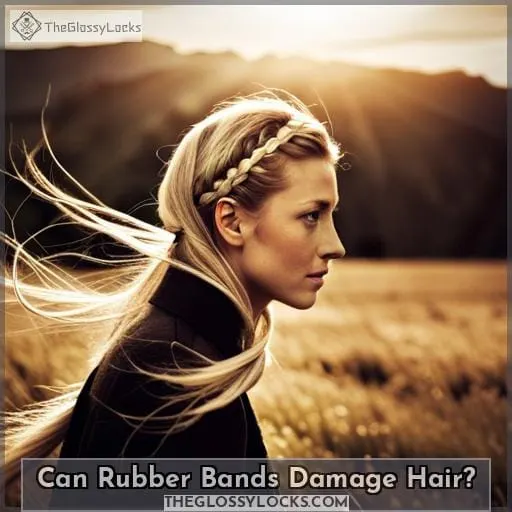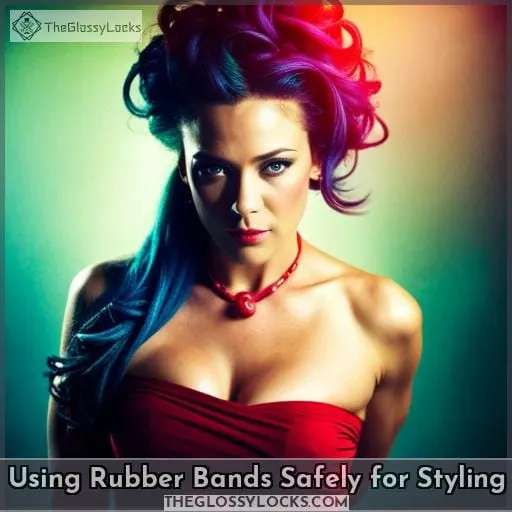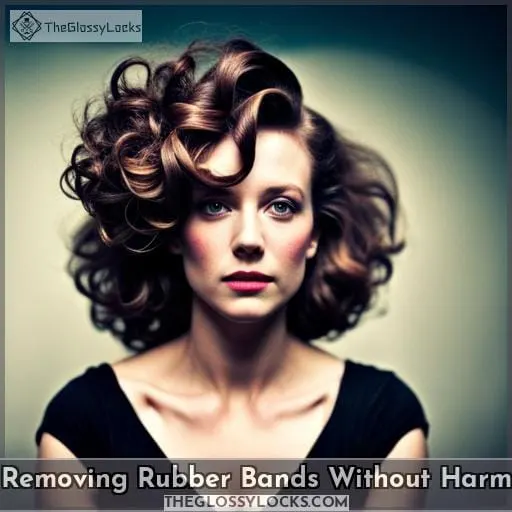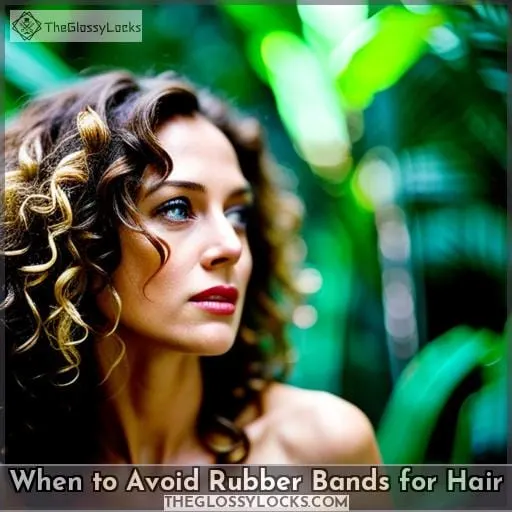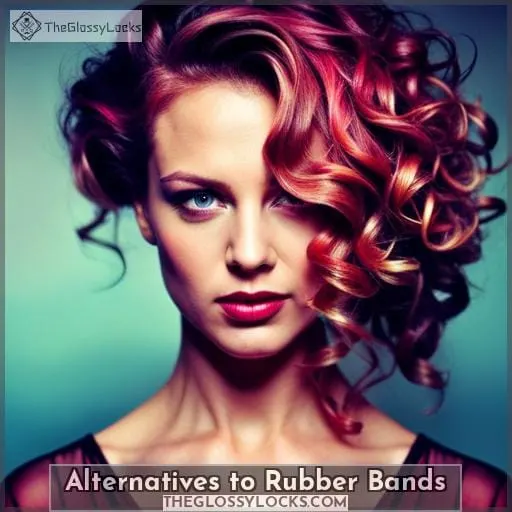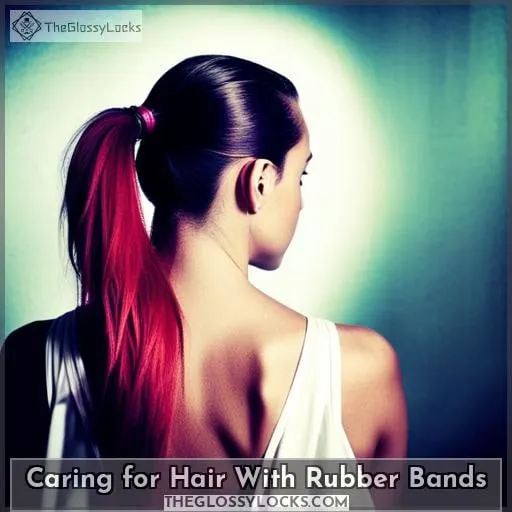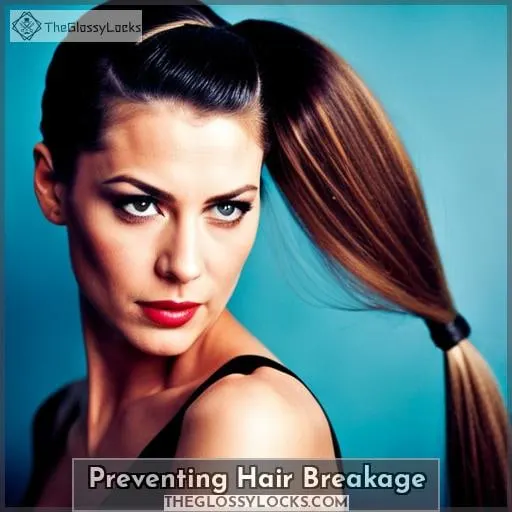This site is supported by our readers. We may earn a commission, at no cost to you, if you purchase through links.
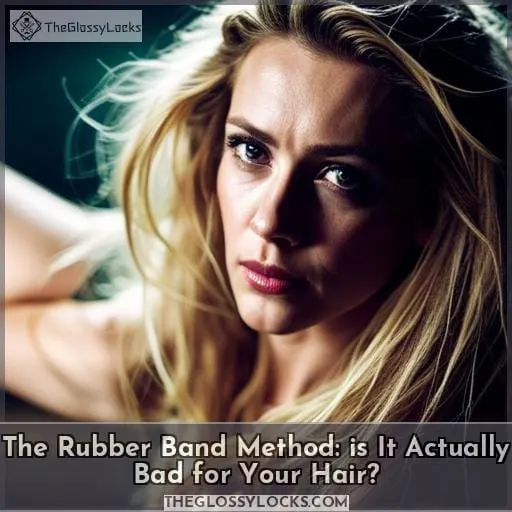
Like Odysseus resisting the sirens’ song, you must find another way. Rubber bands pull and tug, little by little damaging your strands. The breakage and split ends aren’t obvious at first. But over time, your hair looks dull and lifeless.
There’s a better path. Try soft scrunchies or gentle claw clips instead. Your hair will thank you.
Don’t let the rubber band method make you another casualty. Your hair is worth caring for.
Table Of Contents
Key Takeaways
- Constant tight tying of hair with rubber bands can cause breakage over time due to repetitive friction and tension on hair strands.
- Rubber bands should be used temporarily, not for all-day styling, to minimize damage from continued friction.
- Wide, soft hair ties or bands are better alternatives than standard rubber bands for preventing traction and breakage of hair.
- When rubber bands are used, change their location frequently and remove gently to distribute tension and avoid pulling hair strands.
Can Rubber Bands Damage Hair?
You’re right, babe – constantly pullin’ your hair tight with rubber bands can cause breakage over time. Rubber bands seem like an easy go-to for ponytails and braids, but too much tension from repetitive use weakens your strands and leads to damage.
The friction wears down your hair cuticles, makin’ hairs prone to snappin’. Save rubber bands for temporary styles, not all-day wear. Stick to low-tension accessories like soft scrunchies, gentle cloth-covered bands, and satin ribbons to prevent traction alopecia.
And make sure to oil your hair beforehand for protection. With some care, you can keep rockin’ cute hairdos without causin’ harm – your luscious locks will thank ya.
Using Rubber Bands Safely for Styling
Choose wide, soft bands without metal and don’t over-tighten ’em. This lets you rock cute styles while protectin’ your strands. When usin’ rubber bands for braids, twists, and ponytails, pick ones with soft, smooth edges.
Wide rubber bands grip hair firmly without excessive tension. Look for bands with a soft fabric covering to reduce friction.
Secure your style without pullin’ too tight. Apply a nourishin’ oil to hair before and after usin’ bands to prevent breakage.
If takin’ down a protective style, gently unwrap and hold hair near the roots as you slide bands off.
Removing Rubber Bands Without Harm
Removing rubber bands from your hair without damage requires care. To avoid breakage, unwrap bands completely before taking them off, using scissors if necessary.
Unwrap Fully Before Removal
When removing your hairstyle, slowly unroll each section completely before sliding off the tie to avoid breakage. Carefully remove the band, holding the hair above to prevent pulling. Avoid snapping bands off hair as this can cause damage.
Instead, gently loosen and fully unwrap ties first. This protects strands while taking out accessories. Prioritize your hair’s health when styling and removing styles by avoiding quick, careless removal methods that weaken hair.
Use Scissors if Needed
If the rubber band resembles a snake constricting your hair, don’t hesitate to snip it with shears. Carefully hold your hair to avoid snipping it too. Invest in satin-covered scissor alternatives for a hair-friendly option.
Mind sharp edges and use caution. Instead, try unwinding bands fully, moisturizing hair beforehand, and choosing gentler ties like silk. With some precautions, you can keep your hair looking great in rubber band hairstyles without thinning or damage.
When to Avoid Rubber Bands for Hair
You’d best skip the bands with boxy braids or ponytails when your hair’s already weak.
- Fine or chemically treated hair
- If experiencing hair loss
- When hair’s wet or tangled
- For long-term styles like braids
- Around damaged areas of your hair
Avoid using rubber bands in these situations to prevent breakage. Choose gentler ties like silk scrunchies instead. Apply moisturizing oils before securing any style to minimize friction. When taking out elastics, gently unwrap – don’t yank.
Focusing on nourishment and protective practices prevents damage from accessories.
Alternatives to Rubber Bands
Have you considered scrunchies or ribbon hair ties? These fabrics grip hair gently without causing damage like traditional rubber bands, protecting your strands while keeping styles in place. Scrunchies and ribbons are gentler alternatives that can keep hair up securely without breakage.
Choosing softer fabrics over rubber bands reduces hair damage from tugging and friction.
Scrunchies
Swap out rubber bands for scrunchies when styling your hair to avoid damage. Scrunchies are gentler, more hair-friendly alternatives to rubber bands.
| Material | Benefits | Styles |
|---|---|---|
| Silk | Smooth, gentle | Buns, ponytails |
| Cotton | Breathable, soft | Braids, buns |
| Satin | Sleek, protective | Ponytails, buns |
| Spiral | Coil grip, no crease | Braids, buns |
| Ribbon | Decorative, gentle | Braids, ponytails |
Explore scrunchies and fabric hair ties for damage-free styling.
Ribbon Ties
Choose velvety ribbon hair ties for a gentle hold. Satin ribbons are elastic alternatives that make hair-friendly ties. Style textured hair gently by twisting strands around ribbons instead of using bands.
Ribbon tie benefits include: they prevent cuticle layers from being stripped when wet. Ribbons reduce friction compared to bands or clips. Prioritize scalp health and hair integrity.
Caring for Hair With Rubber Bands
Let’s search for ways to reduce damage when using elastic bands in your hair. Select snag-free bands that don’t tug on strands. Loop them just tightly enough to hold your style without excessive tension. Apply oils or gels before putting them in to minimize friction.
Remove bands gently by unwrapping completely and holding hair near the roots to avoid breakage. Change locations frequently and avoid reusing the same bands repeatedly in one area.
Try styling techniques like braiding sections instead of securing with elastics. Explore alternatives like silk scrunchies or satin hair wraps. With proper hair elastic selection, damage prevention measures, and gentle removal, you can use rubber bands while maintaining healthy hair growth.
Preventing Hair Breakage
You’ll prolong your mane’s lifespan by goin’ gentle on the hairbands. When securin’ styles, opt for soft, covered bands that won’t snag or pull. Avoid excessive tightness that leads to breakage over time. Before tyin’ up, apply oils or gels to reduce friction.
Change locations and rotate bands regularly to spread out tension. At night, give hair a break instead of sleepin’ in elastics. If removin’ bands leads to tangles or difficulty, don’t force it – use conditioner or oil to gently work them out.
With some care and tension control, you can keep stylin’ while maintainin’ strength and elasticity.
Conclusion
Visually, placing a rubber band around a bundle of hair is like putting a tourniquet on your finger—restricting blood flow causes damage over time. Ultimately, rubber bands can indeed be detrimental if used incorrectly. However, armed with knowledge, you can style stress-free by using gentle, protective bands and taking care during removal.

